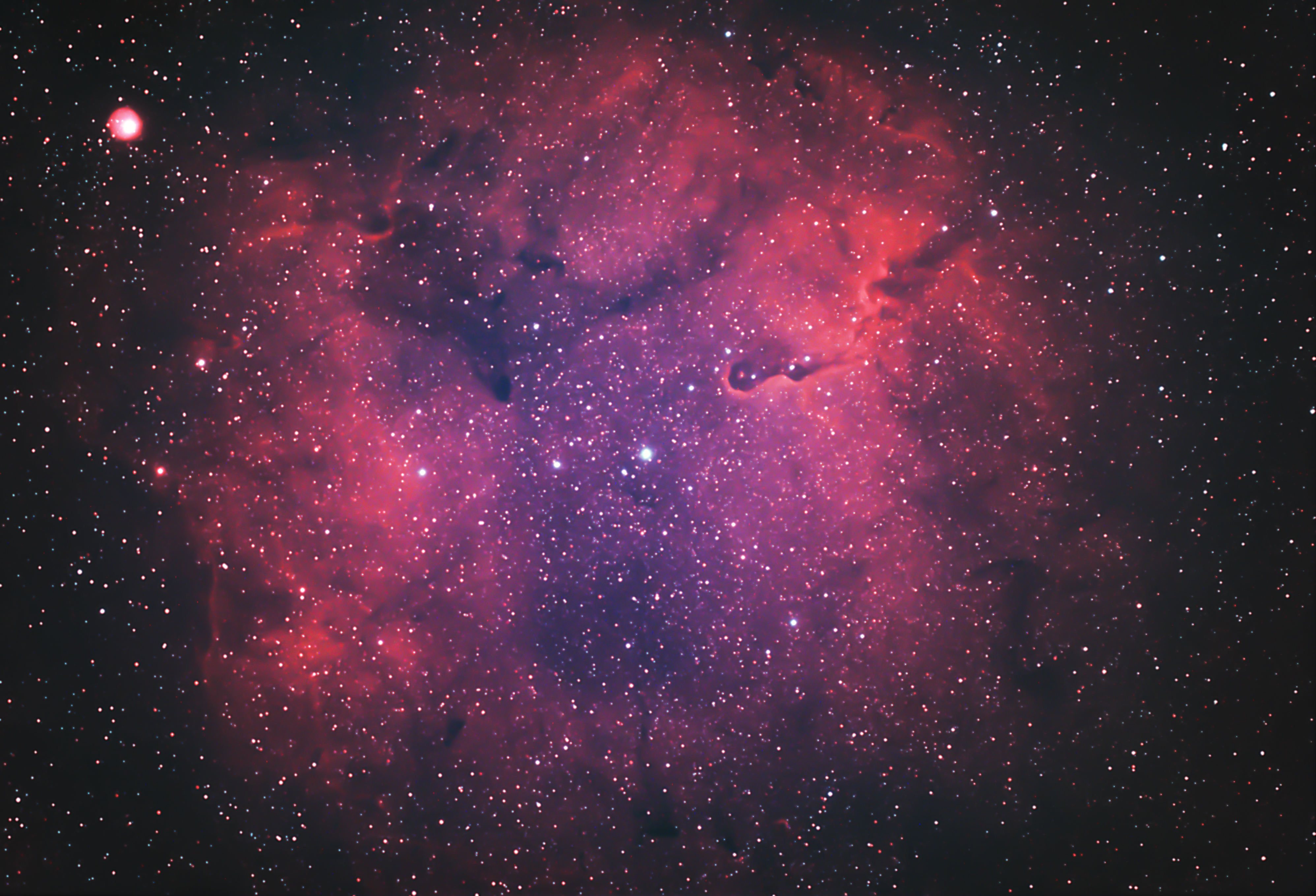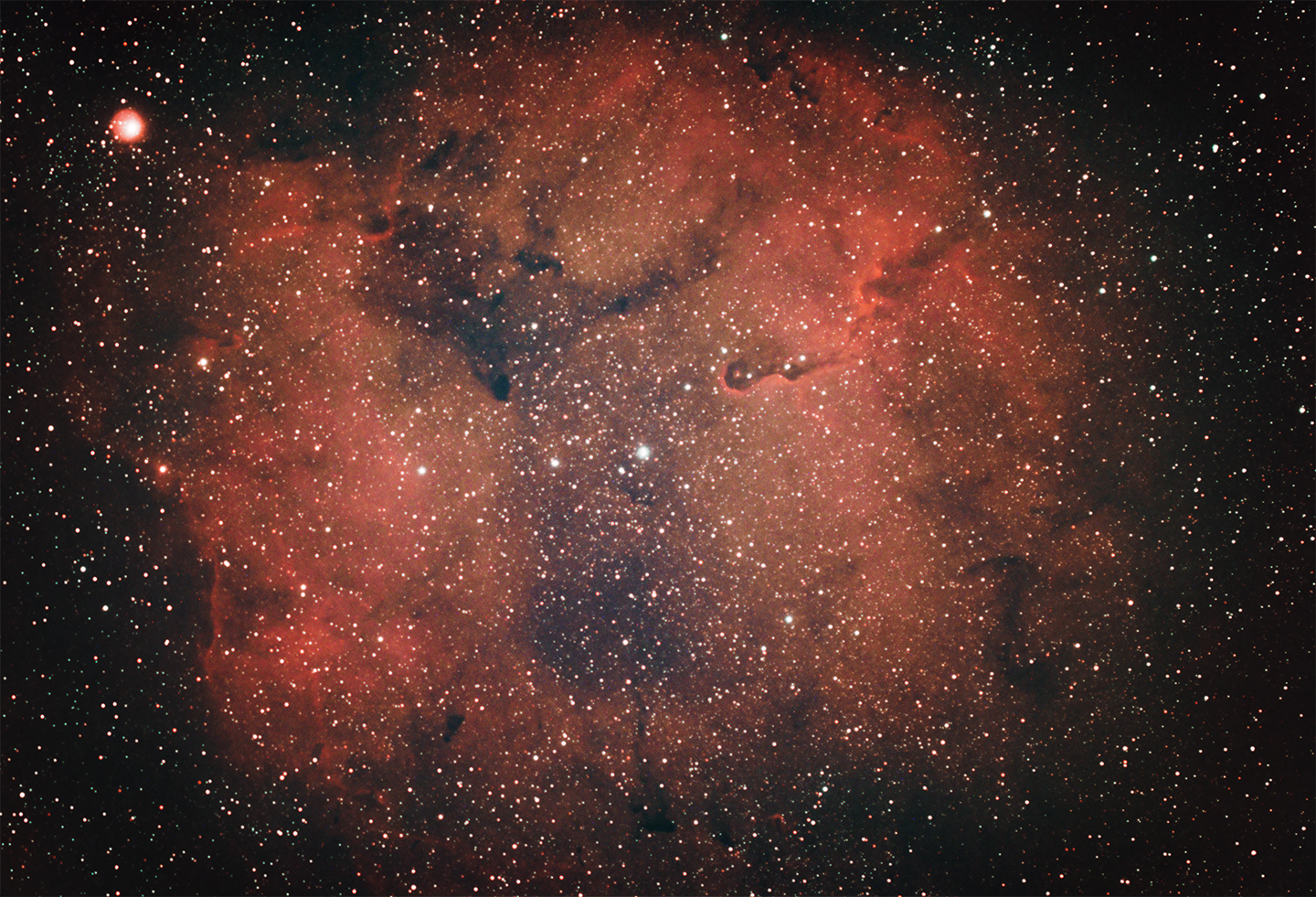
Gear
- Telescope – Meades 70mm Series 6000 Refractor
- Main Camera – ZWO ASI294MC Pro
- Filter – Optolong 2″ L-Enhance
- Mount – HEQ5
- Guide Scope – ZWO 30mm f/4 mini guide scope
- Guide Camera – ZWO ASI290MM
- Controller – ZWO ASIAir Pro
Acquisition
- 29 Light Images at 120 gain, 300s exposure
- 29 Dark Images
- 200 Bias Images
- No Flats
Elephant’s Trunk Nebula. IC 1396. 2,400 light years away.
The processing of deep space object images is really interesting. You’ve got this stacked image of light data. A DSO is not present in the image (or barely present) and your job is to take this to photoshop and uncover it. It’s sorta like being Horatio Caine and constantly asking yourself “Now enhance.”
It’s definitely not something you learn overnight. Especially if you’re not familiar with the tools in Photoshop.
Here is my originally processed image:

I was pretty happy with my original take. But then I looked at my California Nebula and I realized something. I missed a couple of steps and I overdid others. There’s too many stars. The area in middle seems pretty flushed. I over curved things. The more I looked at the image the more flaws I saw. TRASH IT!
So, I took another stab at it.
In my second I attempt I took my time with the processing in photoshop. I always feel short on time so I rushed it the first time around. Usually if my son is awake and I’m on the computer he’s hovering waiting to play some Kerbal Space Program. He was asleep during this time and I made sure to slow things down. I made sure not to go overboard with adjusting the curves. I also felt I did a good job minimizing the stars the second time around. To be honest I might have forgotent to do that step originally. By minimizing the stars it really helped in adding more focus to the nebula. It helps push the nebula to the foreground more.
Overall, my second attempt of processing Elephant’s Trunk Nebula turned out really good. I think I’m finding the level I like my images to be. I’ve seen some astrophotographs that look a little overdone. Then you have others who really try to keep it as minimum processed as possible. At the end of the day it’s all preference. I’m just trying to find my personal preference.
Processing Steps in Photoshop:
- Color Balance
- Curve adjustments
- Gradient correction using GradientXTerminator
- Saturation Boost
- Vibrance Boost
- Noise Reduction using Astronomy tool – Space Noise Reduction action
- Noise Reduction using Astronomy tool – Deep Space Noise Reduction action
- Sharpening
- Noise reduction and curve adjustment in Camera Raw Filter
- Minimized stars in Photoshop, 2 rounds
- Minimized stars using Astronomy tool – Make Stars Smaller action
- Astronomy tool – Enhanced DSO and Reduce Stars action
- Astronomy tool – Less Crunchy More Fuzzy
- Smart Sharpen filter


Thanks Mike. I’ll certainly be a regular here.